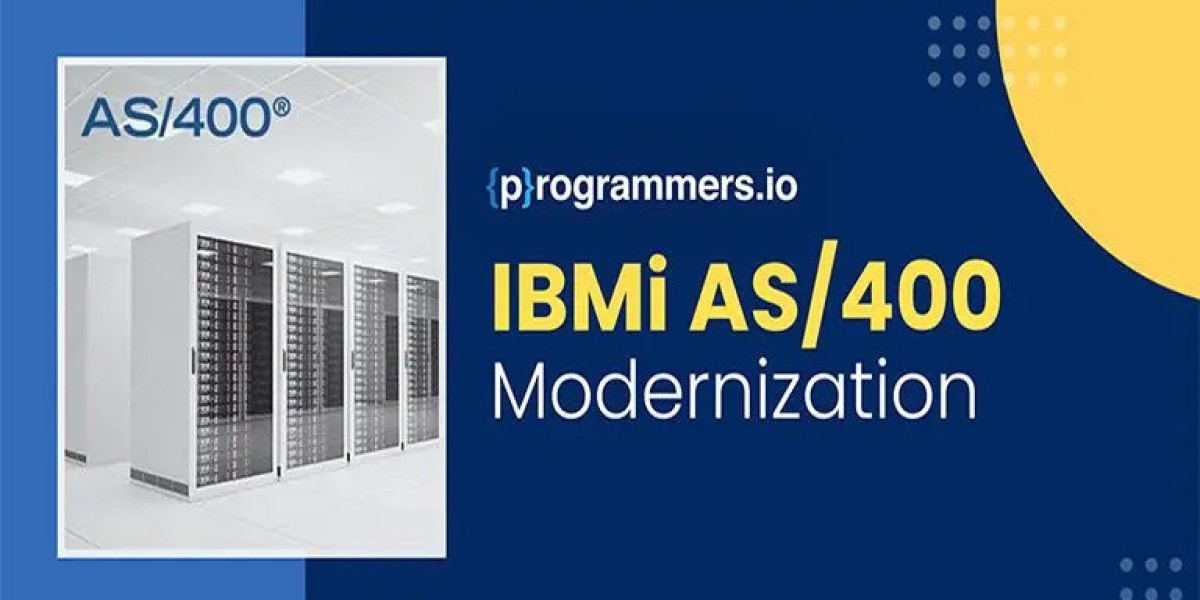The AS400, first introduced by IBM in 1988, has been the backbone of countless enterprises for decades. Known for its robustness, reliability, and longevity, it has powered industries from manufacturing to finance. However, the modern business environment demands systems that are not only reliable but also agile, scalable, and adaptable to emerging technologies. Enter IBM i, the evolved and modern iteration of the AS400, designed to meet these needs.
Modernizing from AS400 to IBM i in 2024 involves more than just an upgrade—it’s about embracing innovation while maintaining business continuity. This guide explores how organizations can modernize their AS400 systems to IBM i without causing disruption, ensuring they are future-ready while preserving the strengths of their legacy platforms.
Why Modernize Your AS400 to IBM i?
1. Staying Competitive in a Changing Landscape
Today’s business world demands real-time data processing, seamless integrations, and the ability to adapt to evolving customer expectations. Legacy AS400 systems, while reliable, often lack the features necessary to compete in this environment, such as cloud compatibility, support for open-source technologies, and advanced analytics.
Upgrading to IBM i provides:
- Enhanced flexibility for hybrid cloud adoption.
- Compatibility with modern programming languages like Python, PHP, and Node.js.
- Support for modern user interfaces (UIs) over green screens.
2. Cost Efficiency
Maintaining aging AS400 hardware can become increasingly expensive due to higher energy consumption, difficulty sourcing spare parts, and reliance on legacy expertise. IBM i, running on modern Power Systems hardware such as Power10, offers:
- Lower total cost of ownership (TCO) through energy-efficient operations.
- Reduced downtime with better hardware reliability.
- Consolidation of workloads, allowing more to be done on fewer servers.
3. Enhanced Security
Security threats continue to evolve, and legacy systems are often ill-equipped to handle modern attacks. IBM i includes robust, integrated security features such as:
- Encryption for data at rest and in transit.
- Built-in compliance tools for regulations like GDPR and HIPAA.
- Real-time threat detection capabilities.
Challenges of Modernization
Transitioning from AS400 modernization to IBM i is not without its challenges. Understanding and addressing these is key to a successful migration.
1. Resistance to Change
Many businesses rely heavily on legacy AS400 systems, and employees may resist modernization out of fear of disruption or job complexity. Proper change management and training are critical.
2. Dependency on Legacy Applications
Some companies run mission-critical applications that were custom-developed for the AS400. These applications may need significant updates or rewrites to function on IBM i.
3. Lack of Skilled Resources
With fewer professionals skilled in AS400 systems, finding expertise to support a migration can be difficult. Partnering with IBM-certified experts can help bridge this gap.
Key Steps for Modernization Without Disruption
1. Assess Your Current Environment
Start by conducting a comprehensive inventory of your AS400 system:
- Applications: Identify which applications are still relevant and in use.
- Hardware: Assess the condition of your current hardware and its limitations.
- Workflows: Analyze current workflows to identify inefficiencies or bottlenecks.
2. Define Your Modernization Goals
Clearly outline what you aim to achieve by modernizing to IBM i. Common goals include:
- Improving system performance.
- Reducing operational costs.
- Enabling new features like cloud integration or data analytics.
3. Develop a Phased Migration Plan
Avoid trying to modernize everything at once. A phased approach minimizes risks and allows time for testing and adjustments. Typical phases include:
- Migrating non-critical applications first.
- Upgrading hardware to Power Systems.
- Transitioning critical applications and workloads gradually.
4. Leverage Backward Compatibility
IBM i is designed with backward compatibility in mind, allowing many AS400 applications to run without significant modifications. This ensures continuity during the transition.
Modernization Strategies
Modernizing AS400 systems doesn’t necessarily mean starting from scratch. Depending on your organization’s needs, you can adopt one or a combination of the following strategies:
1. Rehosting
Rehosting involves migrating existing AS400 applications to the IBM i platform with minimal changes. This “lift-and-shift” approach is cost-effective and reduces disruption but may not leverage all the capabilities of IBM i.
2. Refactoring
Refactoring involves making targeted updates to legacy applications to improve performance, scalability, or usability. This could include:
- Updating user interfaces from green screens to modern web-based interfaces.
- Optimizing code for better performance on IBM i.
3. Replatforming
Replatforming moves applications to IBM i while taking advantage of its modern features, such as support for containers, open-source languages, or cloud integration.
4. Rebuilding
For organizations looking to fully modernize, rebuilding applications on IBM i ensures they are optimized for today’s business needs. While this requires more investment, it provides long-term scalability and flexibility.
Best Practices for a Seamless Transition
1. Engage Stakeholders Early
Involve stakeholders from IT, operations, and business departments early in the planning process. Their input ensures the modernization aligns with business goals and addresses potential concerns.
2. Invest in Training
Equip your IT team with the skills needed to manage and maintain IBM i systems. IBM offers extensive training programs to help teams transition smoothly.
3. Partner with Experts
Work with IBM-certified consultants or partners who specialize in IBM i migrations. Their expertise can help identify potential pitfalls and ensure a smooth transition.
4. Test, Test, Test
Conduct thorough testing at every stage of the migration to identify and resolve issues before they affect production systems. This includes:
- Application testing to ensure compatibility.
- Performance testing to measure improvements.
- Security testing to identify vulnerabilities.
Unlocking the Full Potential of IBM i
Modernizing from AS400 to IBM i not only preserves the strengths of your legacy systems but also opens the door to new possibilities:
1. Hybrid Cloud Integration
IBM i supports hybrid cloud deployments, allowing businesses to scale resources on-demand while maintaining control over critical data.
2. Advanced Analytics
With IBM i, businesses can integrate AI and analytics tools to gain deeper insights into operations, customer behavior, and market trends.
3. Modern Development Tools
Developers can use modern tools and languages, such as Git, Jenkins, Python, and Node.js, on IBM i, enabling faster and more efficient development cycles.
Real-World Success Stories
Case Study: Manufacturing Firm Modernizes Operations
A mid-sized manufacturing company running AS400 systems upgraded to IBM i on Power10. By modernizing its ERP software and integrating IoT data, the company:
- Reduced downtime by 30%.
- Improved order processing speed by 40%.
- Enhanced predictive maintenance using AI analytics.
Case Study: Financial Institution Enhances Security
A financial services provider transitioned from AS400 to IBM i to address increasing cybersecurity threats. The upgrade enabled the firm to:
- Implement advanced encryption for all data.
- Achieve compliance with international regulations.
- Reduce operational costs by 20% through workload consolidation.
Conclusion: The Time to Modernize is Now
The AS400 has served businesses well for decades, but the demands of 2024 require a modern approach. Upgrading to IBM i provides a pathway to innovation while maintaining the reliability and stability businesses have come to expect.
By following a structured and phased approach, leveraging IBM i’s backward compatibility, and embracing new technologies, organizations can modernize without disruption. The result is a system that is not only ready for today’s challenges but also capable of adapting to future demands.
The transition from AS400 to IBM i isn’t just an upgrade—it’s an investment in the future of your business.


